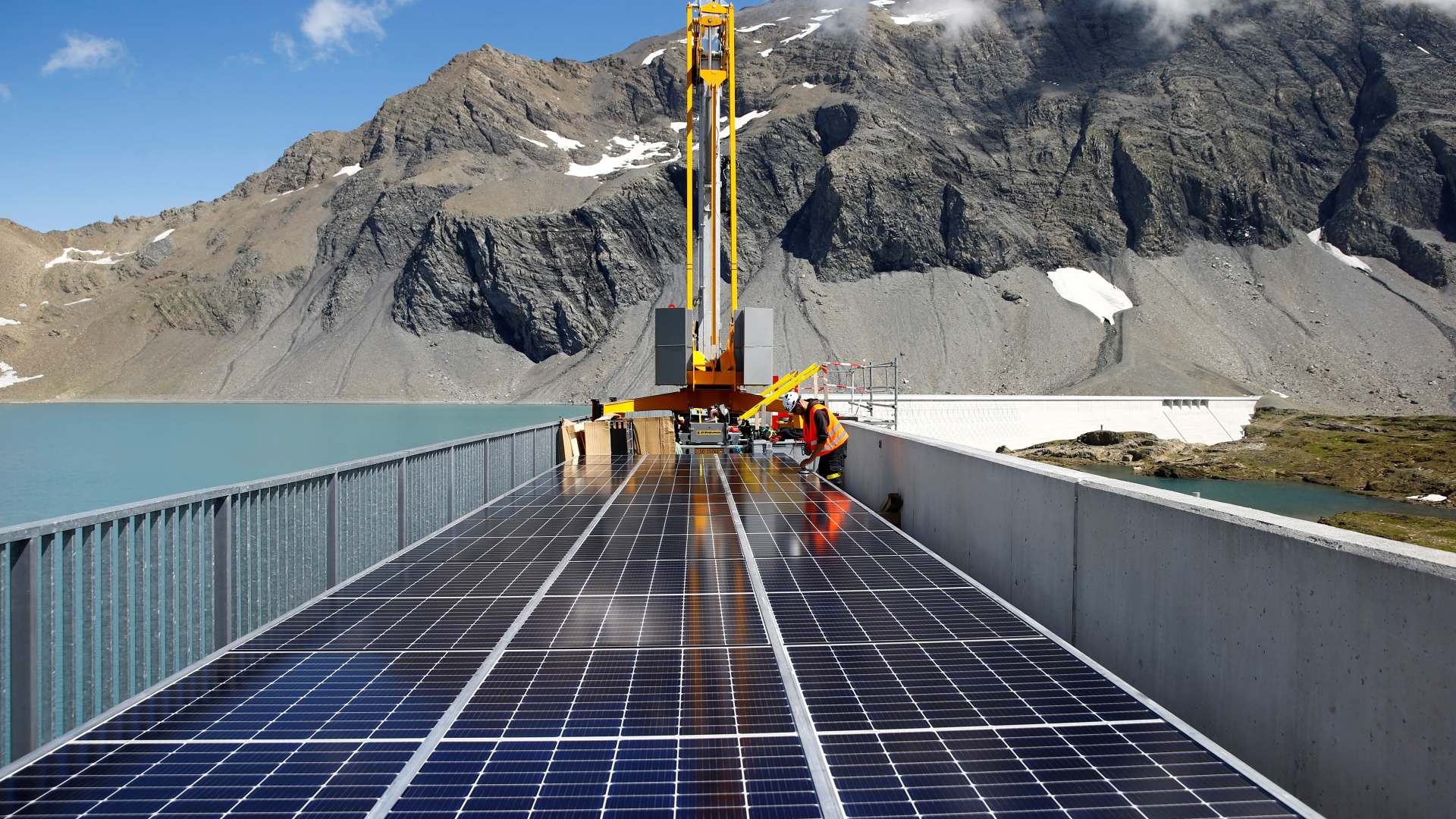
A person working on the construction of the solar power plant near Lake Muttse in the Alps. /Retuers/ Arnd Wiegmann
A person working on the construction of the solar power plant near Lake Muttse in the Alps. /Retuers/ Arnd Wiegmann
Construction on Switzerland's largest alpine solar plant has begun – potentially helping to close the gap left by phasing out nuclear energy as the country tries to reach net-zero emissions by 2050.
The field will provide 3.3 million kilowatt hours of electricity every year and the alpine location, 2,500 meters above sea level and often high above the clouds, will let the Muttsee plant deliver half its production during the winter months of the year, when sunlight is generally in short supply in Switzerland. Solar plants at lower elevations produce only around a quarter of their electricity during winter.
READ MORE
Afghanistan live updates
Social media checks for UK gun owners after mass-shooting
Did dragons really exist?
The plant is so high in the mountains that helicopters have been brought in to transport the necessary components to the site. According to Axpo, the largest producer of renewable energy in Switzerland, the plant's operation will offset the carbon footprint of its construction within the first few months of its completion.
Last year, solar power only provided 3.7 percent of Switzerland's electricity, while fossil fuels made up 60 percent of the supply and nuclear power accounted for a third.
"We have a boom mainly in solar [panel installations] for small houses but not much else here in Switzerland," said Christian Heierli, the project leader at Axpo.
Switzerland has already utilized much of its potential for hydropower expansion and challenges facing short-term expansion of wind and thermal energy mean the country must focus on more large-scale solar projects, Heierli said.
Denner, a supermarket chain, already agreed to purchase the power generated by the plant for 20 years.
Source(s): Reuters

